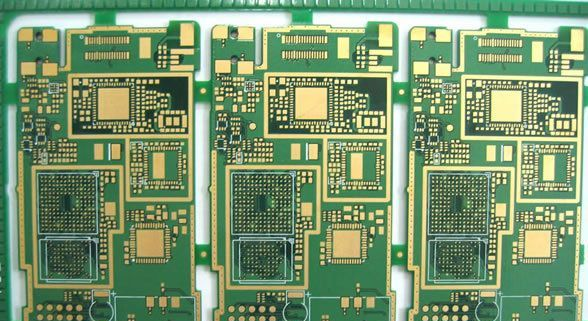1 The numerical simulation model of gear wear is based on the discretization principle of the wear process, and the tooth profile is described by the contact point. Based on the calculation sketch, the simulation model and algorithm scheme are established.
2 Processing of several technical problems (1) Determination of the single-tooth-toothed meshing area On the meshing line, the number in the upper left of the symbol in the formula j represents the coordinate system.
(2) Determination of the boundary point of the outer edge of the wear profile In order to determine the pressure angle, radius of curvature and sliding coefficient of the point at the boundary point of the wear profile, this paper adopts the method of the outer point of the edge similar to the grid method, according to Taylor. The series is determined by the approximation as follows (accurate to the second derivative).
(3) Inspection of the meshing condition The envelope condition should be followed for each point of the newly formed tooth profile. If the tooth profile points adjacent to the j point studied are not embedded in each other, if this condition is not satisfied, then j point No contact, work with the neighboring point that does not guarantee the condition. Since the wear vector of the part does not coincide with the displacement vector, the point M is the distance between the two points.
(4) Determination of the limit control conditions As long as the index related to the tooth geometry can be used as the ultimate control condition of the wear state, such as the bending strength of the gear teeth, the contact fatigue strength of the tooth surface, the impact load, the anti-adhesive strength, the pressure The angle (engagement angle), the change of the instantaneous transmission ratio and the high wear amount of the single or intermeshing two teeth, etc., but the complexity of setting different limit control conditions is different, this paper temporarily takes the high wear amount and the instantaneous transmission ratio. The amount of change is used as a control condition.
3 algorithm scheme and example calculation program includes three iterative loop modules, the inner loop with k as the loop variable is used to determine the parameters near a contact point; the loop with J as the loop variable is used to determine the discrete positions of the parts. The parameter at the contact point; the outer loop with I as the loop variable is used to determine the relevant parameters of the state of each joint in each step. The specific algorithm scheme is: the synthesis of the gear mechanism; a series of discrete mutual positions of the part when starting work Determine certain parameters of the gear pair (such as sliding speed, pressure angle, tooth profile radius of curvature, load, pressure distribution state, etc.); select the wear step size to determine the part within a wear step, and select all discrete mutual positions Wear; after completing a calculation step, determine the coordinates of each joint of the new conjugate tooth profile; check the contact condition of each point according to the envelope condition of the conjugate plane; after completing the calculation cycle, determine the discrete contact points of the gear pair The parameters of the driven wheel, the gear ratio or other control parameters that reflect the state of the gear pair (such as the amount of high wear).
4 Conclusions (1) The dynamic wear process of parts can be described by discrete quasi-static, and numerical simulation technology can be used to calculate the whole process, which provides a new way to solve the quantitative calculation of dynamic wear.
(2) The calculation software developed can predict the wear life of involute gears and compare the design schemes. It enriches and develops the theory of gear strength calculation. It is simple and feasible to select the height wear and instantaneous gear ratio as the limit state control conditions. .
(3) The numerical simulation method has universal applicability and has reference value for the wear calculation of various spouse parts or tribological systems.
2 Processing of several technical problems (1) Determination of the single-tooth-toothed meshing area On the meshing line, the number in the upper left of the symbol in the formula j represents the coordinate system.
(2) Determination of the boundary point of the outer edge of the wear profile In order to determine the pressure angle, radius of curvature and sliding coefficient of the point at the boundary point of the wear profile, this paper adopts the method of the outer point of the edge similar to the grid method, according to Taylor. The series is determined by the approximation as follows (accurate to the second derivative).
(3) Inspection of the meshing condition The envelope condition should be followed for each point of the newly formed tooth profile. If the tooth profile points adjacent to the j point studied are not embedded in each other, if this condition is not satisfied, then j point No contact, work with the neighboring point that does not guarantee the condition. Since the wear vector of the part does not coincide with the displacement vector, the point M is the distance between the two points.
(4) Determination of the limit control conditions As long as the index related to the tooth geometry can be used as the ultimate control condition of the wear state, such as the bending strength of the gear teeth, the contact fatigue strength of the tooth surface, the impact load, the anti-adhesive strength, the pressure The angle (engagement angle), the change of the instantaneous transmission ratio and the high wear amount of the single or intermeshing two teeth, etc., but the complexity of setting different limit control conditions is different, this paper temporarily takes the high wear amount and the instantaneous transmission ratio. The amount of change is used as a control condition.
3 algorithm scheme and example calculation program includes three iterative loop modules, the inner loop with k as the loop variable is used to determine the parameters near a contact point; the loop with J as the loop variable is used to determine the discrete positions of the parts. The parameter at the contact point; the outer loop with I as the loop variable is used to determine the relevant parameters of the state of each joint in each step. The specific algorithm scheme is: the synthesis of the gear mechanism; a series of discrete mutual positions of the part when starting work Determine certain parameters of the gear pair (such as sliding speed, pressure angle, tooth profile radius of curvature, load, pressure distribution state, etc.); select the wear step size to determine the part within a wear step, and select all discrete mutual positions Wear; after completing a calculation step, determine the coordinates of each joint of the new conjugate tooth profile; check the contact condition of each point according to the envelope condition of the conjugate plane; after completing the calculation cycle, determine the discrete contact points of the gear pair The parameters of the driven wheel, the gear ratio or other control parameters that reflect the state of the gear pair (such as the amount of high wear).
4 Conclusions (1) The dynamic wear process of parts can be described by discrete quasi-static, and numerical simulation technology can be used to calculate the whole process, which provides a new way to solve the quantitative calculation of dynamic wear.
(2) The calculation software developed can predict the wear life of involute gears and compare the design schemes. It enriches and develops the theory of gear strength calculation. It is simple and feasible to select the height wear and instantaneous gear ratio as the limit state control conditions. .
(3) The numerical simulation method has universal applicability and has reference value for the wear calculation of various spouse parts or tribological systems.
Epoxy Curing Agents & Accelerators
Kylin Chemicals has been focusing on R&D, manufacturing and supply of specialty additive technologies to epoxy resin industry for over 20 years. Our novel technologies are marketed & supplied under the trade name KylinCure, serving our customers in the field of composites, coatings, adhesives and electric industries, etc. KylinCure is a group of substituted urea based accelerator for dicyandiamide-cured epoxy resins, significantly reduces the curing temperature without sacrificing the shelf life of the compounds.


Epoxy Curing Agents & Accelerators,Curing Agents For Epoxy Resin,Epoxy Curing Accelerating Agent
Kylin Chemicals Co., Ltd. , https://www.kylin-chemicals.com